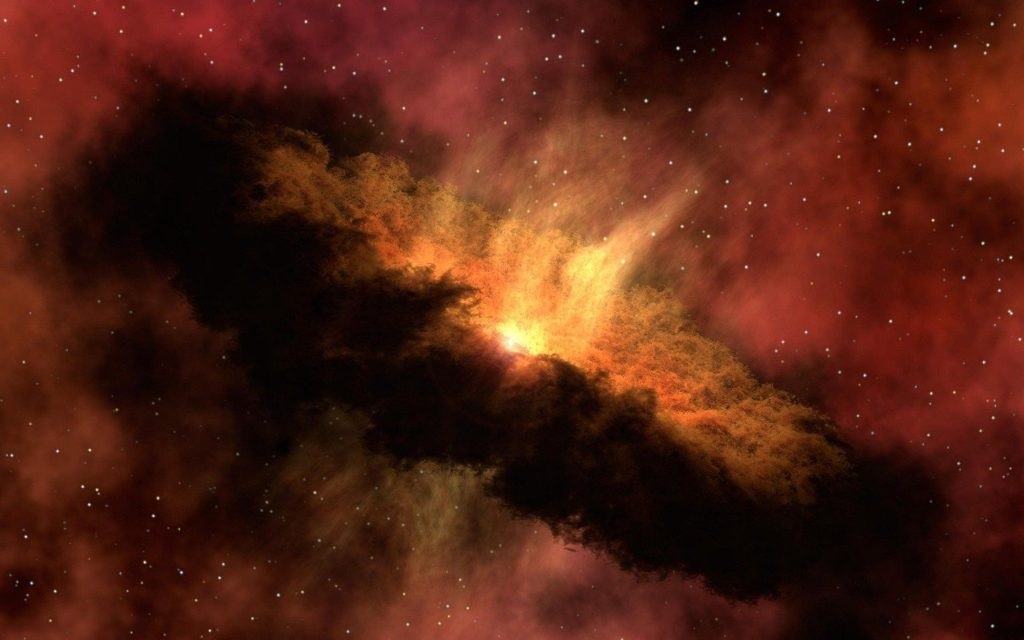In this section, I am trying to say that the kinetic energy of photons In a vacuum is not always the same. For that, we are experimenting with the black body radiation and the photoelectric effect here. According to me, there is no specialty in black body radiation or the photoelectric effect. We can explain them naturally like every action occurring in our surroundings. Nature is giving us the answers if we observe it clearly. We can observe everything as simple even the big bang, inflation, or any action happening in our surroundings as the same. Because everything in nature is working under the same laws. Here I am trying to understand the force and energy. If we can understand very well, what is happening when a force is applied to an object? It will give us the answer to everything. We are categorizing energy as kinetic energy and potential energy. But we know that matter is also energy and we can call it stored energy. Normally we can say that an atom or a particle always seems to be in an equilibrium state. Kinetic energy or potential energy of the object will not change the equilibrium of the system, because it is not mingling with the stored energy in it. A single photon doesn’t have a rest mass but it can show gravity and it can add mass to a system. I am trying to make a better explanation for our present concepts about energy with my observations of our surroundings. We are having the very best equations for Energy (e=m{c}^{2} andE=\mathrm{hf}). Einstein explained to us the relationship between mass and Energy. And the Planck relation E=\mathrm{hf} relates energy with frequency. To say something about my thoughts on the subject of Energy, I would like to go back to the period of Plank and Einstein and find a relation between these two theories. Planck explained to us about Black body radiation and Einstein explained to us the photoelectric effect. I was curious about these two phenomena and I intended to think about blackbody radiation and the photoelectric effect to reach some conclusions. Blackbody radiation describes the amount of energy required to form an electromagnetic field (a quantum). Here we can imagine a photon is a unit particle. So here we can see the amount of energy required to form a unit particle or a photon and its frequency. Once we go through the photoelectric effect we can see that a photon can eject an electron from an atom, if it has a sufficient frequency. So it is clear that the frequency of a photon varies. That means the frequency of particles can vary according to the amount of energy stored in it. We know that the minimum amount of stored energy required (work function) for a photon to eject an electron from an atom is closely related to its frequency. The intensity or velocity of the photons has no role in this situation. Here we can say that, if a photon doesn’t have sufficient energy stored in it to eject an electron from an atom, it will radiate from the atom at the same time. In blackbody radiation, we can see the amount of energy required to create an electromagnetic field, and in the photoelectric effect, we can see that an electromagnetic field is added to an electron to eject that electron from an atom. Now we can imagine what will happen if the amount of energy is less than this level. Normally we can say that its frequency will be less. In a blackbody, it can’t create an electromagnetic field and in the photoelectric effect, it can’t eject an electron from an atom. So it is just acting on the object and cannot cause anything serious. Imagine a particle with less energy stored than a photon. (maybe half or something less than a photon). What will happen if it is like that? Normally we can say that the frequency will be that much lesser. So at this time, those particles with lesser energy in it cannot act against anything. It can act like a transparent object and it can show only gravity according to its frequency. We all know that if one or more photons are accommodated in a system, it can add some mass to the total system. This way these low-energy particles can add mass to a system according to the number of particles in the system. Here I intend to say that dark matter may exist as particles like this (that’s why it can contribute mass and gravity to the total energy of the universe).
Here we can use the equation E=Һf and calculate the energy of the Photon. We know that photons don’t show any rest mass even if they travel with the speed of light. In light, we can observe photons with different frequencies at the same kinetic Energy (velocity). The photoelectric effect states, if a photon has a certain frequency, it can eject an electron from an atom. Now for a moment, we can forget the photon. We can imagine an object with a fixed mass. Think that object is at rest now and we can apply a force on it. Suddenly the object gets moved and it achieves kinetic energy. So kinetic energy is the energy (force) that affects another object (energy). So now the object’s total energy is its rest mass plus its kinetic energy. So a photon’s total energy is hf plus kinetic energy. Here kinetic energy is equal to the speed of light. So a photon’s kinetic energy is equal to hf+c. We can see that kinetic energy is not adding with the object’s rest mass. So it can leave the object at any time. Now we can check the momentum of an object. Imagine an object with mass 5 kg and velocity 8m/s. We can calculate the momentum of the object as 40 Ns and Kinetic energy as 160 N. Now we can increase the velocity of the object as 10m/s again we can measure the momentum as 50 Ns and kinetic energy as 250 N. Now I am increasing the mass of the object as 10 kg and keeping the velocity as 8 m/s. and I calculate the momentum as 80 Ns and kinetic energy as 320 N. By this example I would like to explain the kinetic energy of a photon. So if I increase the mass or velocity it will increase the momentum and kinetic energy. Now we will see what is happening here. An object at a mass and a velocity have its momentum. To change the velocity of the object, I have to increase or decrease the applied force (kinetic energy). If I change the mass and need to keep the same velocity, I have to change the applied force. If I increase the mass and the applied force (kinetic energy) keeps the same as before, the object will have a less velocity than previous and the momentum remains the same. So momentum is property of the external force which is acting on the object or momentum will be decided by the applied force. So, kinetic energy or momentum will not affect the equilibrium of the system and so it will never make any change (except motion) on a physical body. We can see that if we increase the mass of the object and keep the kinetic energy the same, it will decrease the velocity only. Here we can see that energy is affecting an object in two different ways, permanently and temporarily (Force). What I mean by permanent energy is the energy that an object can absorb in it. Electrons absorb photons in the photoelectric effect as an example. The temporary energy (force) is the form of energy like kinetic energy or potential energy, which is only added to the object or a system for a while. Here I can show an example and I think it will give us a clear idea about kinetic energy. I need to stick two wood pieces with a nail. So I hit the nail with a hammer and the nail will penetrate into the woods. Here I am applying a force on the nail; the work is done by me because I give a kinetic energy to the hammer. We are sure that the work is done and we get the result. Kinetic energy will not rest with the nail after it penetrates into the wood, it is liberating from the nail. Here I already release a force and it is transferred to the nail and I get the result. So the applied force must have to conserve in the nail and its mass has to increase, but it is not happening here. So kinetic energy is added to the nail temporarily and after that it is released from the object. To explain this we can think of the photoelectric effect or black body radiation. During the photoelectric effect, when an electron is absorbing a photon, the absorbed photon will add a mass to the electron. We know that photons are moving at the speed of light and have no rest mass. The kinetic energy of the photon will add to the electron’s kinetic energy and allow the electron to eject from the atom. Here we can see two different actions 1. Energy is acting on energy, 2. Force acting on force. Energy acting on energy; the electron is absorbing the amount of stored energy in the photon. Force acting on force; kinetic energy of photon is adding to the kinetic energy of electron. Kinetic energy of the photon we can call as the work function. It is the time to think about the kinetic energy of a photon. As I said in an example above, velocity of the moving object is related with the rest mass of the object and its kinetic energy. If we consider a photon, it has no rest mass. We have no doubts that a photon has its own energy in it. So we have to work with the amount of stored energy in it, because mass is also a form of energy. Energy of a photon is directly related to its frequency and we know the energy of a photon E=\mathrm{hf}. The same equation we can write as E=ћс Here is ћ Planck constant c is the speed of light and is the wavelength. Here is the only variable in this equation. So variations in will make changes in the amount of energy stored in a photon. So the frequency of a photon is directly related to the stored energy of a photon.
We have no doubts that the amount of stored energy in photons varies. Now we can imagine two photons (X and Y) releasing from the sun and the amount of stored energy in these two are different. We can say the energy in X is greater than Y. Now we can apply the same amount of force (Kinetic energy) on these two photons. The velocity of these two photons must be different at this time. Here kinetic energy is acting on an object. We know the velocity of a photon V = fλ. Here velocity (kinetic energy) of a photon is the velocity of light “c” is a constant. If kinetic energy remains as a constant each photon must carry the same amount of energy in it. But it is not true here. So each photon has a different velocity according to its energy.

